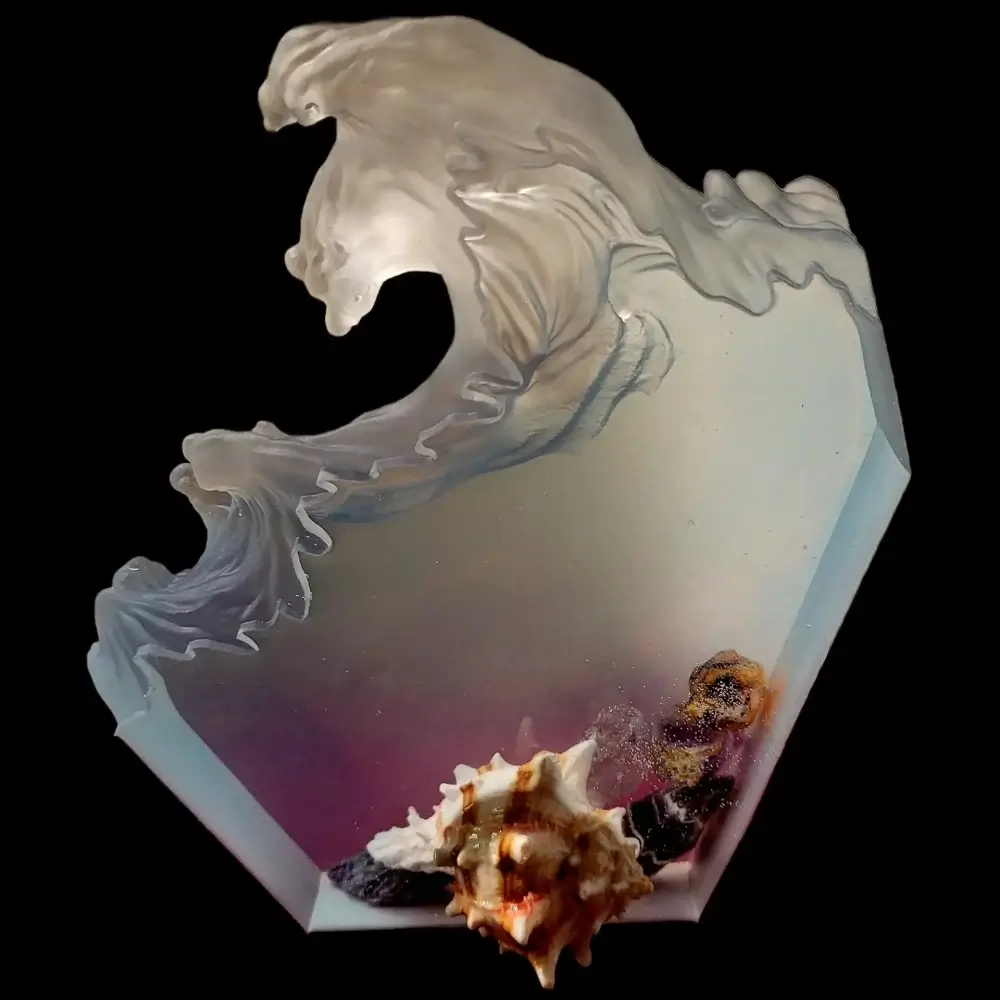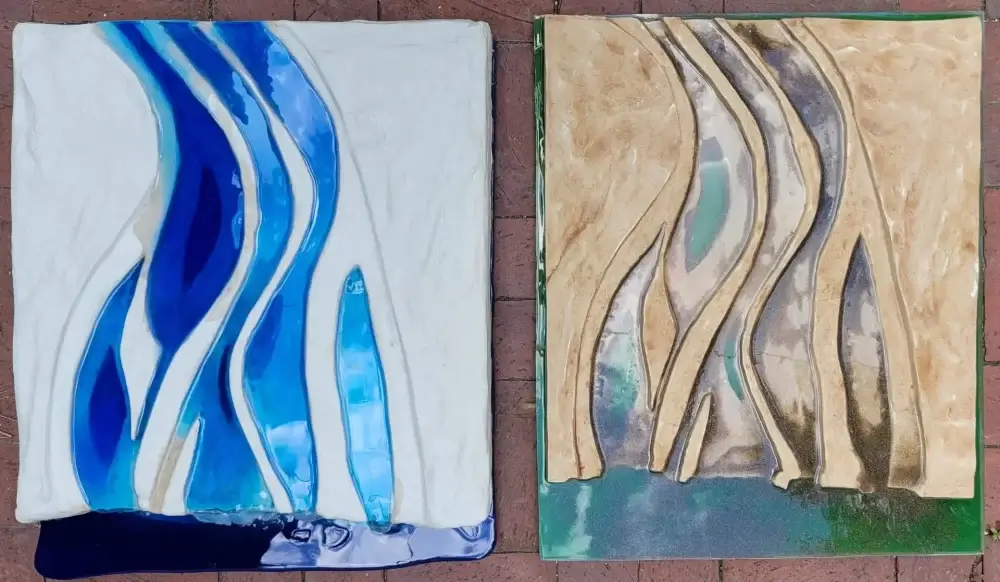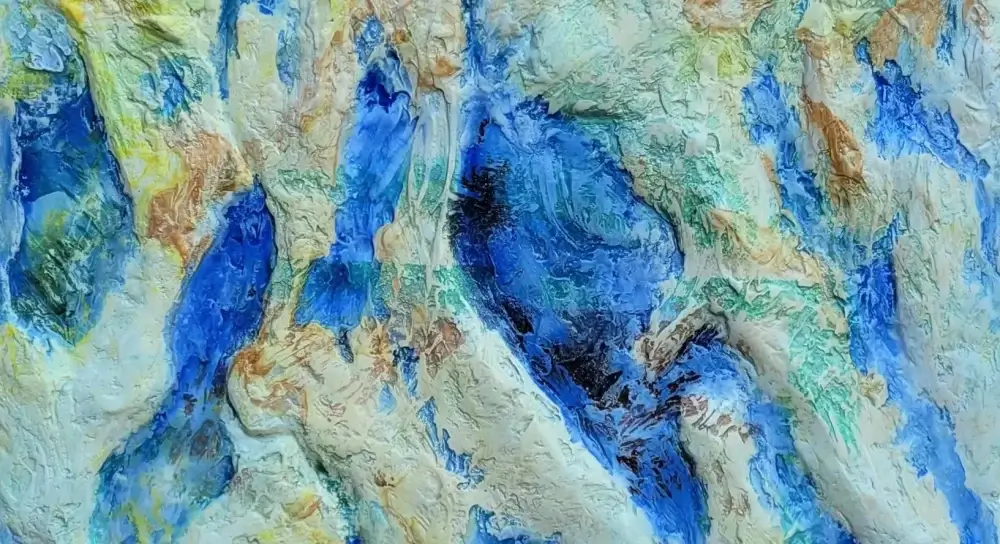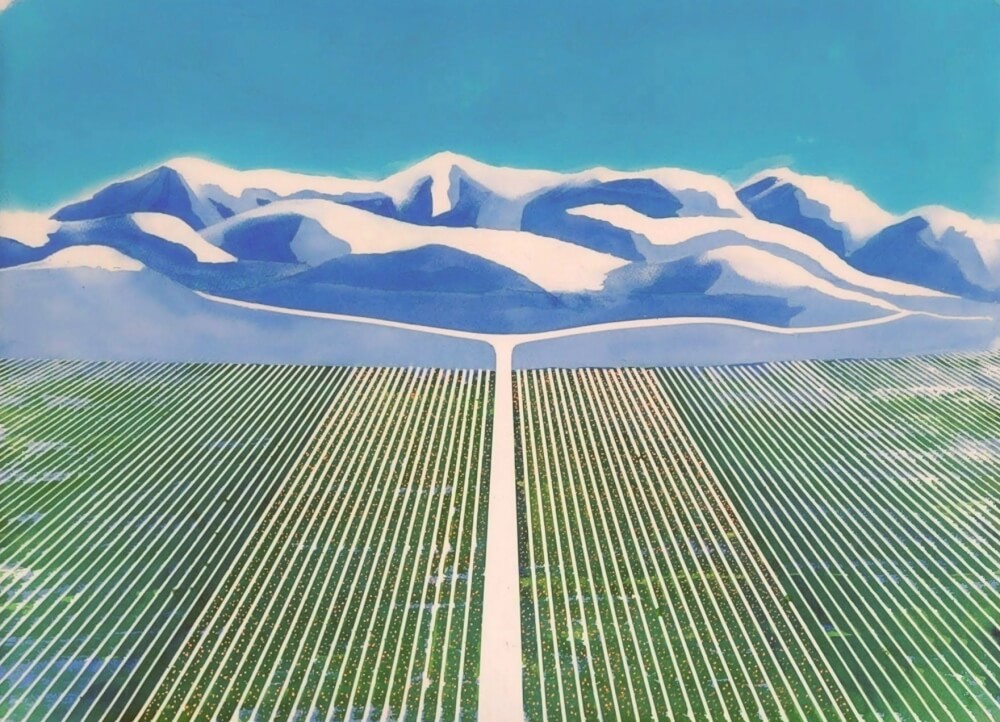
This beautifully colored hard resin sculpture captures the energy and excitement of the Pacific Ocean. I lived in Oregon for a while and visit the ocean when I can. Watching the waves crash on the rocks is something that draws me in and holds me captive. This spectacular wave reminds me of just that feeling. Also available: green with a big dark grey rock and clear with a beautiful sea shell and quartz rocks.




I’ve always been interested in topography and landscapes. Something curious about a scene is that its look can change according to the wildflowers growing on it. That is where abstract landscape art is born. I can visualize land with changes due to light, vegetation, snow, water. I painted this scene in resin after reading about bioluminescence. Plankton of a certain species will glow in the dark. The water is filled with the plankton and so the entire scene is changed. For further reading, here is an interesting article https://www.kqed.org/science/1983841/where-to-see-bioluminescence-bay-area-kayak-tours











You must be logged in to post a comment.